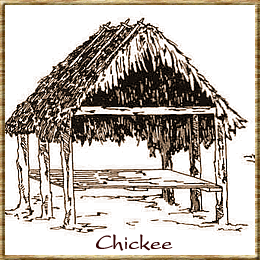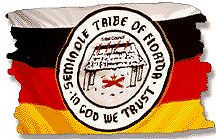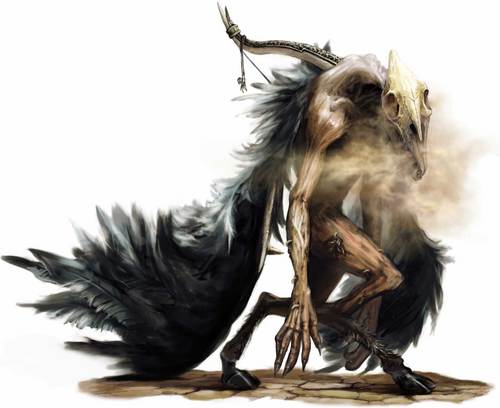Southeast Tribes
Historical Tribes in Southeast Region (above)
Location: Alabama | Arkansas | Florida | Georgia | Kentucky | Louisiana | Mississippi | North Carolina | South Carolina | Tennessee
Terrain: Appalachian Mountains, Piedmont, Mississippi River Valley, Swamps, Woodlands
Abihka, Alabama
Adaes – see Adai
Acolapissa, Louisiana
Adahi – see Adai
Adai (Adaizan, Adaizi, Adaise, Adahi, Adaes, Adees, Atayos), Louisiana
Adaise – see Adai
Adaizan – see Adai
Adaizi – see Adai
Adees – see Adai
Ais, Florida
Akokisa, Texas southeast coast
Alabama, Alabama
Alafay (Alafia, Pojoy, Pohoy, Costas Alafeyes, Alafaya Costas), Florida
Amacano, Florida
Apalachee, Florida
Apalachicola, Georgia, Florida
Atakapa (Attacapa), Louisiana west coast
Atayos – see Adai
Attacapa – see Atakapa
Avoyel (“little Natchez”), northern Texas
Backhooks Nation (=Pahoc ?), South Carolina
Bayogoula, southeastern Louisiana
Bidai, eastern Texas
Biloxi, Mississippi
Boca Ratones, Florida
Caddo, Arkansas, Louisiana, Oklahoma, Texas
Calusa, Florida
Cape Fear Indians, North Carolina southern coast
Catawba, South Carolina
Chatot (tribe) (Chacato, Chactoo), West Florida
Chawasha
Cheraw (Chara, Charàh), North Carolina
Cherokee, North Carolina, Eastern Tennessee; later Oklahoma
Chiaha
Chickahominy, Virginia
Chickamauga, A Branch of Cherokee in Southeastern Tennessee, Northeastern Georgia
Chickanee (Chiquini), North Carolina
Chickasaw, Mississippi, South Carolina, North Carolina, later Oklahoma
Chine, Florida
Chisca (Cisca), Florida
Chitimacha, Louisiana
Choctaw, Mississippi, Alabama, and parts of Louisiana; later Oklahoma
Creek, Alabama; Oklahoma, Georgia
Congaree (Canggaree), South Carolina
Coree, North Carolina
Coushatta, Louisiana
Coharie, North Carolina
Cusabo, coastal South Carolina
Eno (people), North Carolina
Eyeish (Hais, Aliche, Aiche), eastern Texas
Garza, Texas, northern Mexico
Grigra
Guacata (Santalûces), Florida
Guacozo, Florida
Guazoco, Florida
Guale (Iguaja, Ybaja), coastal Georgia & Florida
Hitchiti Georgia, Alabama, Florida
Hooks Nation (=Huaq ?), South Carolina
Houma, Louisiana
Iswa
Jaega, Florida
Jobe (Hobe), Florida, part of Jaega
Jororo, Florida
Keyauwee, North Carolina
Koasati
Koroa
Luca (tribe), Florida
Lumbee, North Carolina
Manahoac, Virginia
Mattaponi, Virginia
Matecumbe (Matacumbêses, Matacumbe, Matacombe), Florida coast
Mayaca (tribe), Florida
Mayaimi, Florida
Mayajuaca, Florida
Meherrin, North Carolina
Mikasuki (Miccosukee), Florida
Mobila (Mobile, Movila), Alabama, western Florida(?)
Mocoso, Florida
Monacan, Virginia
Monyton (Moneton, Monekot, Moheton) (Siouan), West Virginia, Virginia
Mougoulacha, southeastern Louisiana
Nahyssan, Virginia
Naniaba, Alabama
Nansemond, Virginia
Natchez, Mississippi, Louisiana
Neusiok (Newasiwac, Neuse River Indians), North Carolina
Nottaway
Occaneechi (Siouan) ,Virginia
Oconee, Georgia, Florida
Ofo
Okchai (Ogchay)
Okelousa, Louisiana
Opelousa, Louisiana
Osochee (Oswichee, Usachi, Oosécha)
Pacara, Florida
Pakana (Pacâni, Pagna, Pasquenan, Pak-ká-na, Pacanas)
Pamlico, North Carolina
Pamunkey, Virginia
Pascagoula, Mississippi coast
Patiri ,southeastern Texas
Pee Dee, South Carolina, North Carolina
Pensacola, Florida panhandle
Quinipissa ,southeastern Louisiana
Rappahannock Tribe, Virginia
Saluda (Saludee, Saruti), South Carolina
Santee (Seretee, Sarati, Sati, Sattees), South Carolina (See: Santee Sioux, Dakota Sioux)
Santa Luces, Florida
Saponi
Saura, North Carolina
Sawokli (Sawakola, Sabacola, Sabacôla, Savacola), Florida
Saxapahaw (Sissipahua, Shacioes), North Carolina
Seminole, Florida, Oklahoma
Sewee (Suye, Joye, Xoye, Soya), South Carolina coast
Shoccoree (Schockoorees ?), North Carolina (also Virginia?)
Stegara
Stuckanox
Sugeree (Sagarees, Sugaws, Sugar, Succa), South Carolina
Surruque ,Florida
Suteree (Sitteree, Sutarees, Sataree), North Carolina
Taensa
Tawasa, Virginia
Tequesta, Florida
Terocodame, Texas and Mexico
Codam
Hieroquodame
Oodame
Perocodame
Teroodame
Timucua, Florida, Georgia
Acuera, Florida
Agua Fresca, Florida
Arapaha, Florida
Itafi (or Icafui), Florida
Mocama, Florida, Georgia
Northern Utina, Florida,
Ocale, Florida
Oconi ,Florida, Georgia
Potano, Florida
Tucururu, Florida
Yufera, Georgia
Yustaga, Florida
Tiou
Tocaste, Florida
Tocobaga, Florida
Tohomé, Alabama
Tomahitan, eastern Tennessee
Topachula, Florida
Tukabatchee (Tuk-ke-bat-che)
Tuscarora, North Carolina, Virginia (later Niagara Falls, NY)
Tuskegee
Tutelo
Tunica, Mississippi
Utiza, Florida
Vicela, Florida
Viscaynos, Florida
Waccamaw, South Carolina
Wateree (Guatari, Watterees), North Carolina
Waxhaw (Waxsaws, Wisack, Wisacky, Weesock, Flathead), South Carolina
Westo, Virginia, South Carolina
Wetumpka (Wee-tam-ka)
Winyaw, South Carolina
Woccon
Yamasee, Florida, Georgia, South Carolina
Yazoo
Yuchi
Southeast Tribes
Adai
Ais Florida
Akokisa
Alabama Alabama
Apalachee Florida
Atakapa
Bidai
Biloxi Mississippi
Caddo Arkansas, Louisiana, Oklahoma, Texas
Calusa Florida
Catawba South Carolina
Chatot
Chawasha
Cherokee North Carolina; later Oklahoma
Chiaha
Chickahominy Virginia
Chickamauga
Chickasaw Mississippi, South Carolina, North Carolina, later Oklahoma
Chitimacha Louisiana
Choctaw Louisiana, Mississippi, Alabama; later Oklahoma
Creek Alabama; Oklahoma, Georgia
Coahuiltecan Texas
Coushatta Louisiana
Coharie North Carolina
Cusabo
Hitchiti
Houma Louisiana
Iswa
Jeaga Florida
Koasati
Lumbee North Carolina
Mattaponi Virginia
Meherrin North Carolina
Mikasuki Florida
Mobile
Mocama
Monacan Virginia
Nansemond Virginia
Natchez Mississippi, Louisiana
Nottoway
Ofo
Pamlico (Carolina)
Pamunkey Virginia
Pee Dee South Carolina, North Carolina
Pensacola
Rappahannock Virginia
Saponi
Seminole Florida; Oklahoma
Taensa
Tawasa
Tekesta Florida
Timucua (Utina) Florida
Topachula Florida
Tuscarora North Carolina, Virginia (later Niagra Falls, NY)
Tuskegee
Tutelo
Tunica Mississippi
Waccamaw North Carolina, South Carolina
Woccon
Yamasee
Yuchi
Contemporary federally recognized Southeastern Woodlands tribes
Alabama-Coushatta Tribes of Texas
Alabama-Quassarte Tribal Town, Oklahoma
Caddo Nation of Oklahoma
Catawba Indian Nation, South Carolina
Cherokee Nation, Oklahoma
Chickasaw Nation, Oklahoma
Chitimacha Tribe of Louisiana
Choctaw Nation of Oklahoma
Coushatta Tribe of Louisiana
Eastern Band of Cherokee Indians, North Carolina
Jena Band of Choctaw Indians, Louisiana
Kialegee Tribal Town, Oklahoma
Miccosukee Tribe of Indians, Florida
Mississippi Band of Choctaw Indians, Mississippi
Muscogee (Creek) Nation, Oklahoma
Poarch Band of Creeks, Alabama
Seminole Nation of Oklahoma
Seminole Tribe of Florida
Thlopthlocco Tribal Town, Oklahoma
Tunica-Biloxi Indian Tribe of Louisiana
United Keetoowah Band of Cherokee Indians in Oklahoma
Arctic
California
Northeast
Great Basin
Great Plains
NW Coast
Plateau
Southeast
Southwest
Sub Arctic


